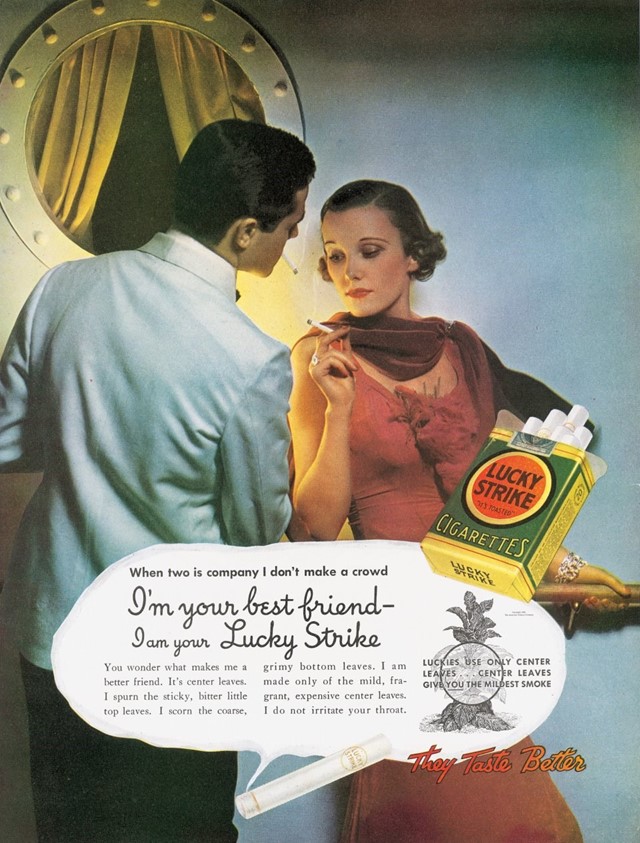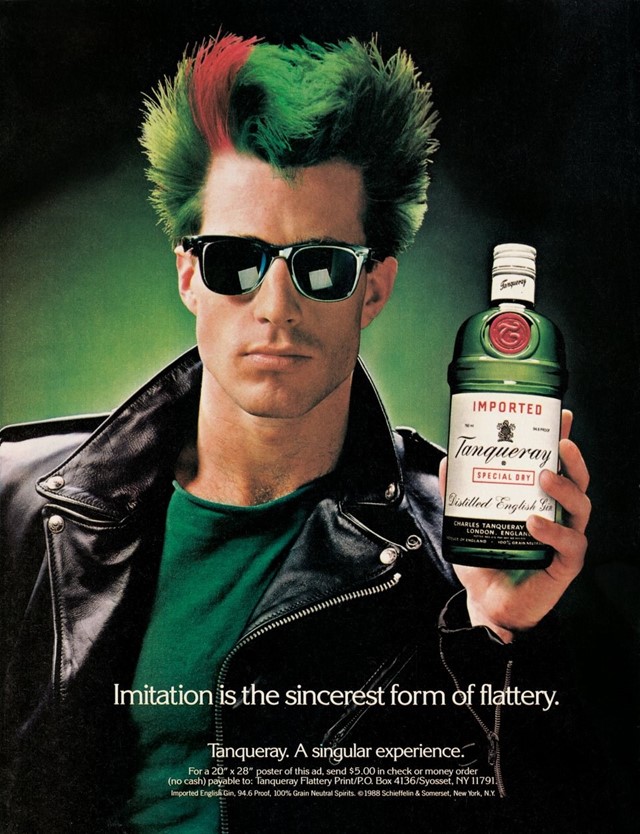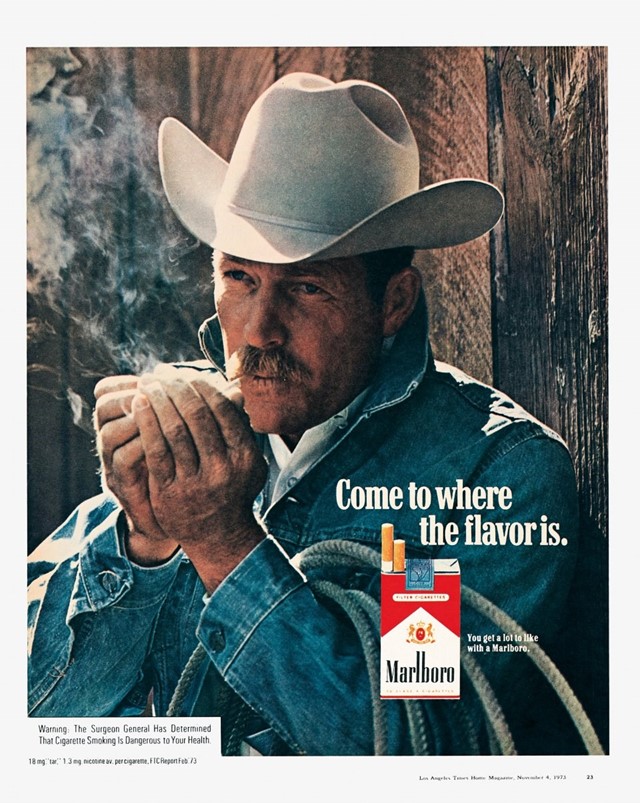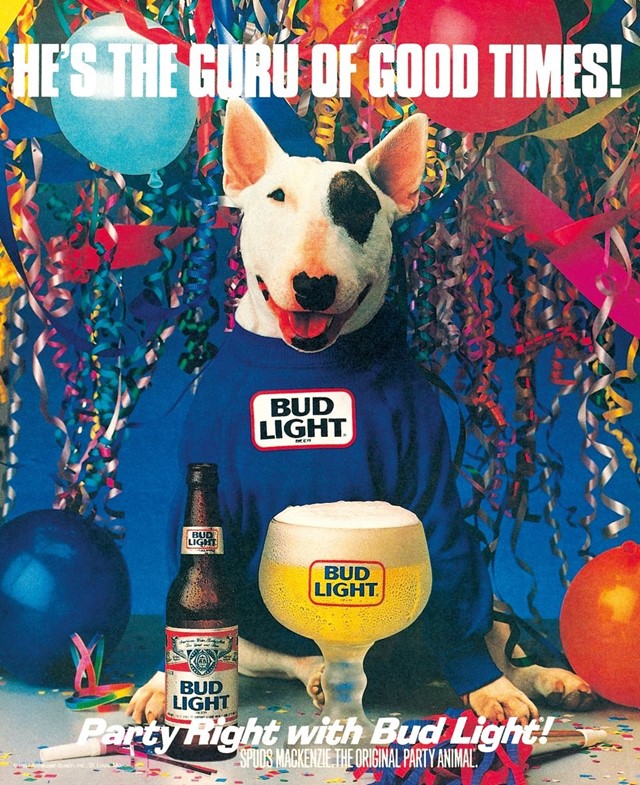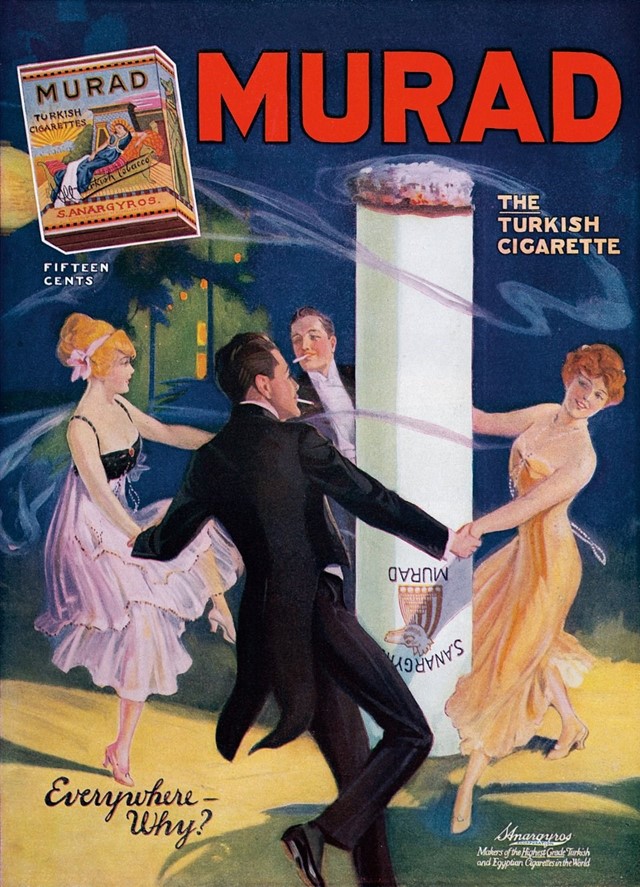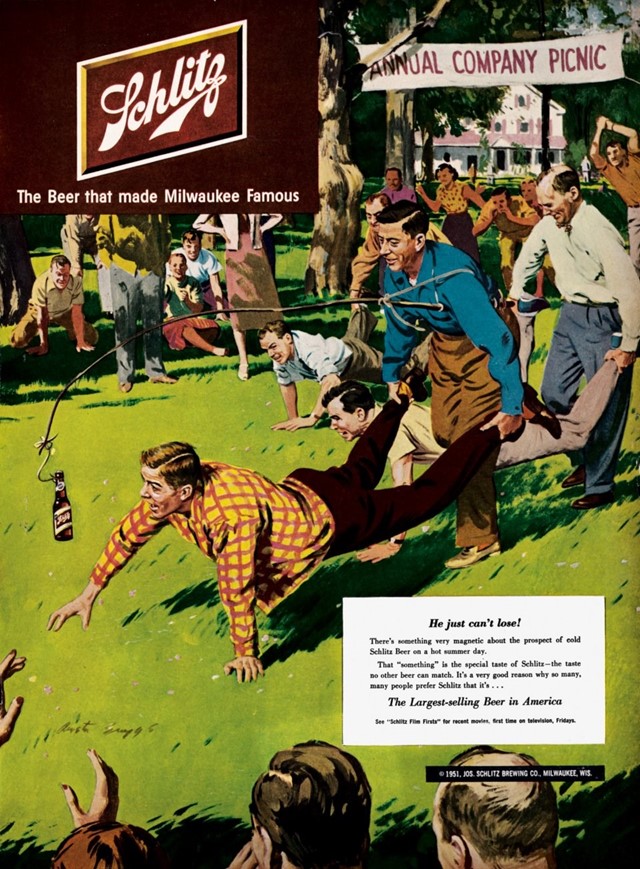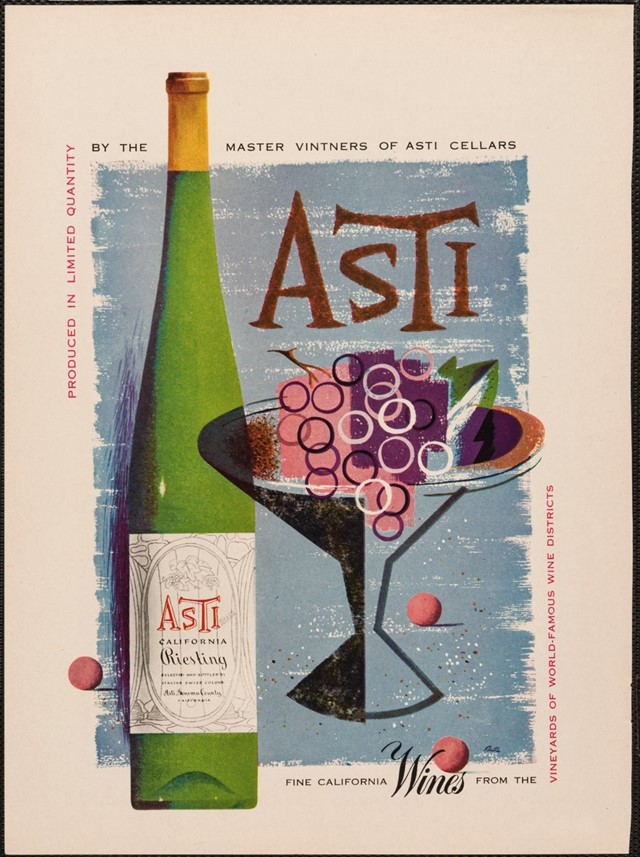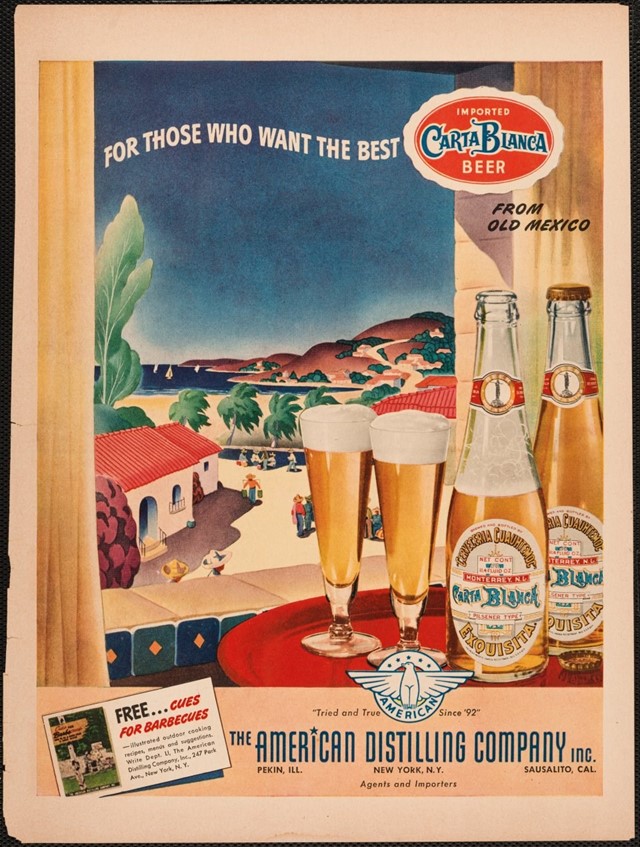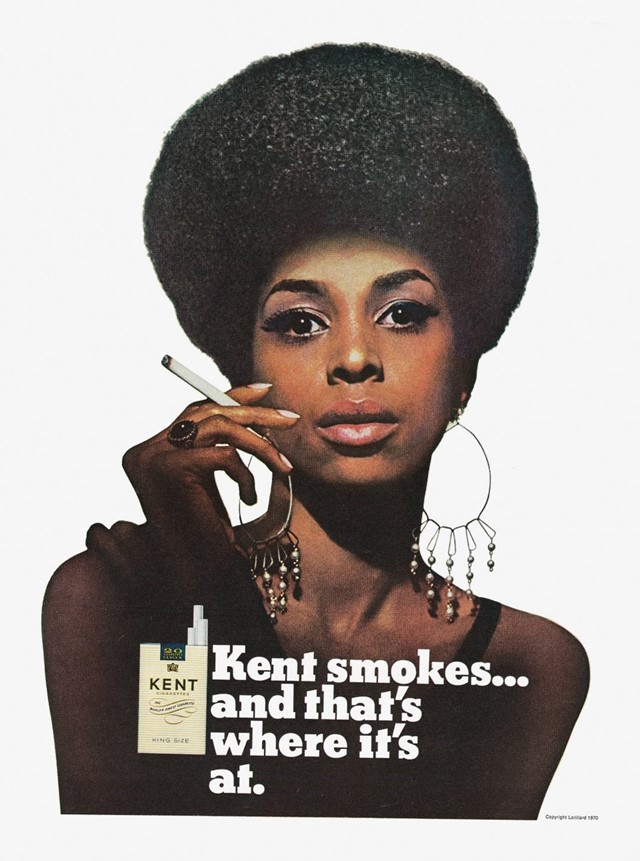A new Taschen-published compendium details a delicious niche in 20th-century advertising: alcohol and tobacco. Travelling chronologically through from 1900 to the 1990s, 20th Century Alcohol and Tobacco Ads underlines the trends, controversies and innovative graphic design of the century’s advertising, which adapted with competition, contemporary events and, eventually, developments in scientific knowledge surrounding these somewhat illicit substances. Their appeal is tied up in the marketing techniques used to sell them, explains Jim Heimann, the tome’s editor and Taschen America’s executive editor. “Especially with smoking, it’s always tied to lifestyle; for the first half of the century it’s always about how glamorous it is to smoke, so people are always portrayed having fun, or being in really elegant situations.”
Heimann’s own vast collection of graphic design-related ephemera, which numbers well into the thousands, formed the backbone of 20th Century Alcohol and Tobacco Ads, producing a comprehensive look at the form’s evolution. From the Golden Age-era Hollywood years, which saw stars like Jean Harlow and Marlene Dietrich endorsing Lucky Strikes, to the gendered 60s ads starring the Marlboro man, followed by the emergence of cigarette brands like Virginia Slims and Eve directly targeting women, and later to the Absolut Perfection hype of the 80s and 90s, promotional posters comprised cutting-edge graphics which were both punchy and impactful. The book serves to unpack the link between enticing graphics and their psychological, seductive impact. “I’m always aware of the visuals, the graphics and the designs and the illustrators and when I’m in the editing process – I’m looking for those visually stunning things.”
The characters developed to represent the brands “became icons of popular culture, because they were so ubiquitous,” Heimann continues. Take the Marlboro man, for example. “It just plays on the whole imagery of the West, and the hypermasculinity of smoking a cigarette takes you out into herding cattle, with this really great-looking guy,” Heimann enthuses. “He’s suntanned, and his skin is tough and he’s got his cowboy hat on. And you know that’s what they want you to buy into: ‘if I smoke a cigarette, I can have the attitude of a lonesome sort of cowboy of the West’.” The strength of this particular campaign meant that Marlboro was eventually able to simply show a belt buckle in a shot – not a cigarette in sight – to conjure up these connotations. Methods like these also courted scandal, however: rival cigarette company Camel’s character Joe Camel was controversially brought to an end after seemingly targeting minors.
The relentless promotion of these widespread vices – encapsulated fittingly in the book’s cover, which depicts a beautiful devil-woman brandishing a cocktail in one hand and a pitchfork in the other – is a continued mainstay in today’s advertising landscape, and Heimann notes that with recent law changes in America the field is still developing in fascinating ways. Due to California’s legalisation of marijuana, there’s “a whole other idea of marketing, and already there are billboards around town here in LA advertising various dispensaries, and they have a convention for pot growers,” he says. “It’s become really interesting.” Laws may come and go, such trends imply, but our fascination with things that are bad for us is utterly timeless.
20th Century Alcohol and Tobacco Ads is released on February 19, 2018, published by Taschen.
